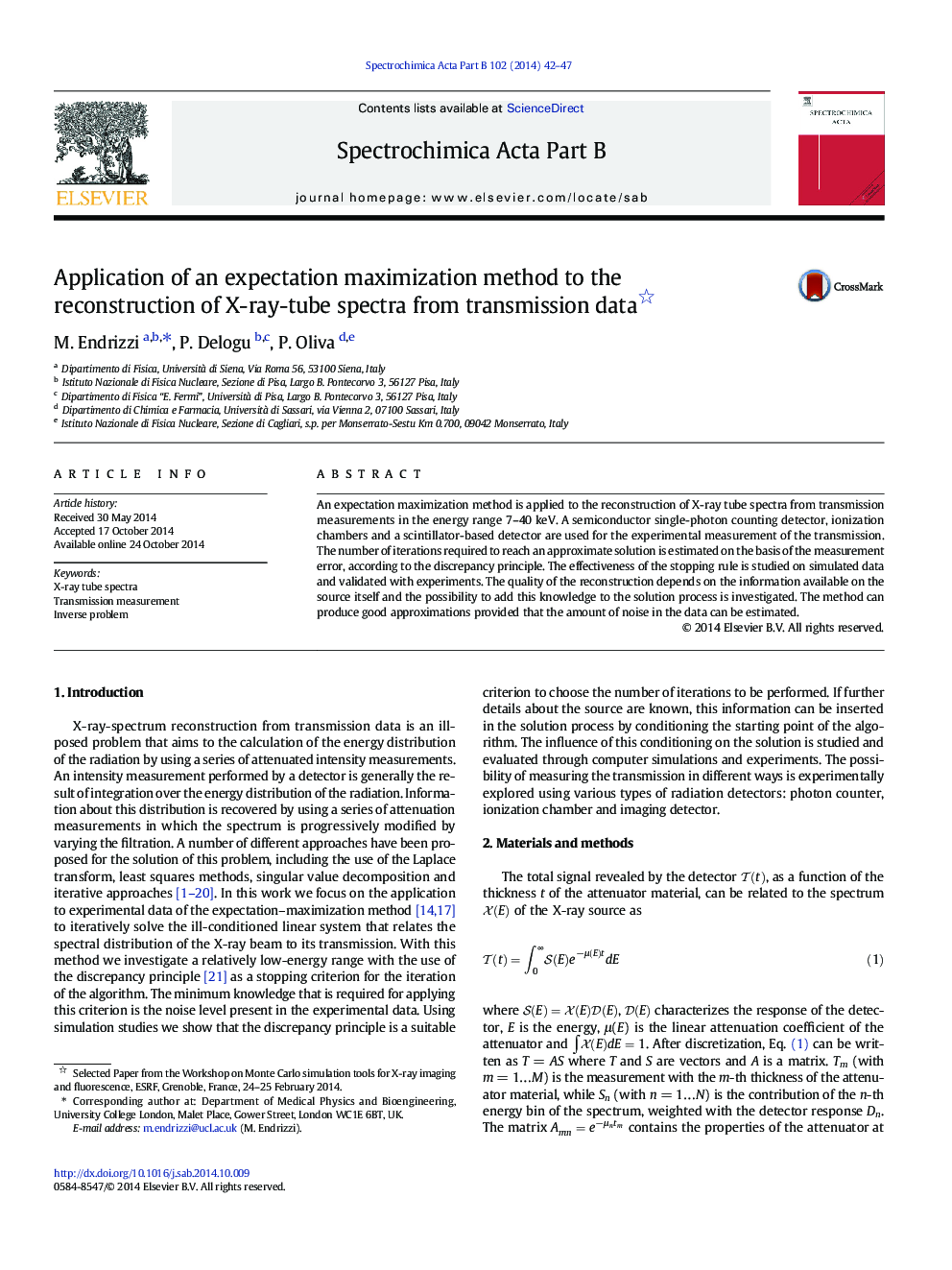| Article ID | Journal | Published Year | Pages | File Type |
|---|---|---|---|---|
| 1239502 | Spectrochimica Acta Part B: Atomic Spectroscopy | 2014 | 6 Pages |
•An expectation maximization method was used together with the discrepancy principle.•The discrepancy principle is a suitable criterion for stopping the iteration.•The method can be applied to a variety of detectors/experimental conditions.•The minimum information required is the amount of noise that affects the data.•Improved results are achieved by inserting more information when available.
An expectation maximization method is applied to the reconstruction of X-ray tube spectra from transmission measurements in the energy range 7–40 keV. A semiconductor single-photon counting detector, ionization chambers and a scintillator-based detector are used for the experimental measurement of the transmission. The number of iterations required to reach an approximate solution is estimated on the basis of the measurement error, according to the discrepancy principle. The effectiveness of the stopping rule is studied on simulated data and validated with experiments. The quality of the reconstruction depends on the information available on the source itself and the possibility to add this knowledge to the solution process is investigated. The method can produce good approximations provided that the amount of noise in the data can be estimated.
